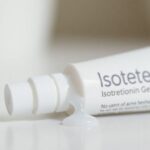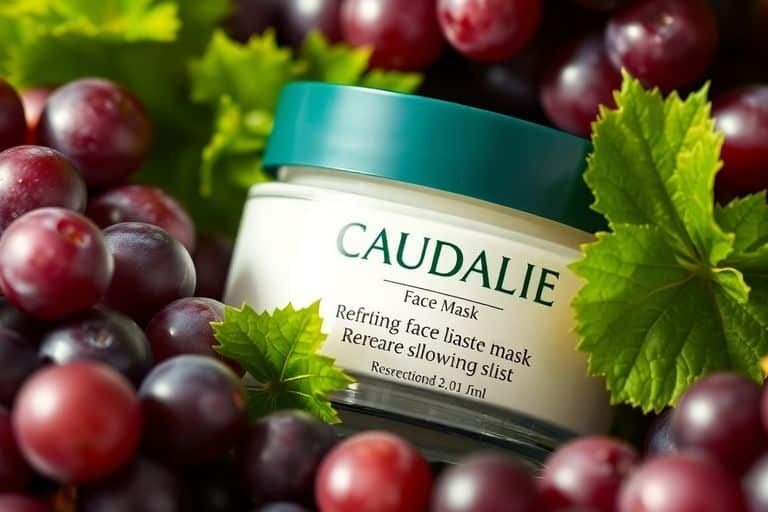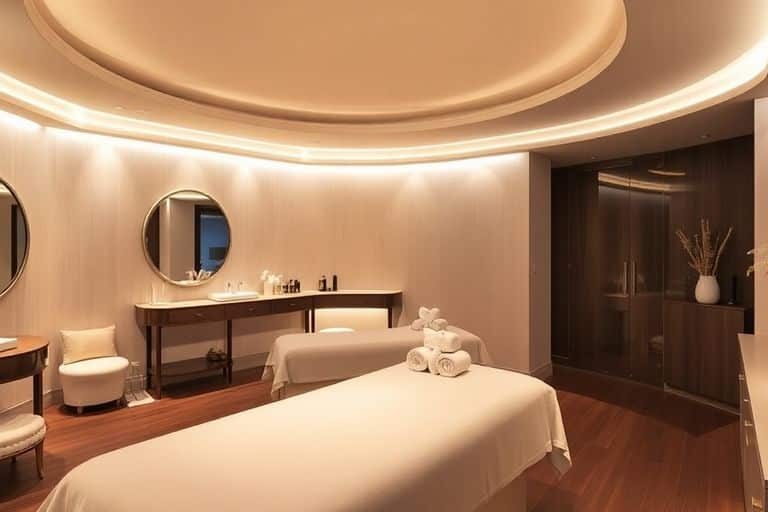Laser resurfacing is becoming a popular option for those looking to improve their skin’s appearance, but understanding the costs involved can be a bit tricky. In the UK, prices can vary based on various factors, making it important to know what to expect. In this article, we’ll break down the costs associated with laser resurfacing and help you understand what influences these prices, so you can make an informed decision about your skin treatment.
Key Takeaways
- The type of laser used significantly affects the overall cost of treatment.
- Prices can vary widely depending on the area of the body being treated.
- Practitioner experience can influence treatment costs and outcomes.
- Consultation is crucial for understanding treatment specifics and costs.
- Post-treatment care can add to the overall expense, so plan accordingly.
Factors Influencing Laser Resurfacing Cost
Laser resurfacing costs can vary quite a bit, and it’s not always easy to figure out why. Several things play a role in the final price you’ll pay. Let’s break down the main factors.
Type of Laser Used
The kind of laser used makes a big difference. Different lasers are designed for different skin issues, and some are just more advanced (and expensive) than others. For example, a CO2 laser, known for its effectiveness on deep wrinkles, will likely cost more per session than an erbium laser, which is often used for milder skin concerns. Fractional lasers, which treat only parts of the skin, might have a different pricing structure too. The laser skin resurfacing cost will depend on the technology used.
Treatment Area
This one’s pretty straightforward. The larger the area you’re treating, the more you’ll pay. Treating your full face will cost more than just targeting a small area like around your eyes or mouth. It’s all about the time and effort involved for the practitioner.
Practitioner Expertise
Just like with any service, experience counts. A highly experienced and qualified practitioner will usually charge more than someone who’s just starting out. You’re paying for their skill, knowledge, and the peace of mind that comes with knowing you’re in safe hands. It’s worth doing your research and checking their credentials to make sure they’re properly certified to perform laser resurfacing treatments.
Choosing a practitioner based solely on price isn’t a good idea. You want someone who knows what they’re doing to minimise risks and maximise results. Paying a bit more for expertise can save you money (and stress) in the long run.
Average Price Range for Laser Resurfacing
Alright, let’s talk money. Laser resurfacing isn’t exactly cheap, but understanding the costs involved can help you budget and make informed decisions. Prices vary quite a bit depending on several things, so let’s break it down.
Cost Breakdown by Treatment Type
The type of laser treatment you choose will significantly impact the price. Here’s a general idea of what you might expect:
- Ablative Laser Resurfacing (CO2, Erbium): These are more intensive and typically cost more, ranging from around £800 to £3,000 per session. For example, CO2 laser resurfacing can be a bit pricey.
- Non-Ablative Laser Resurfacing: These are gentler and usually cheaper, with prices ranging from £500 to £1,500 per session.
- Fractional Laser Resurfacing: This falls somewhere in between, costing roughly £600 to £2,500 per session.
Regional Price Variations
Where you get your treatment also matters. Clinics in London and other major cities often charge more than those in smaller towns or rural areas. This is usually due to higher overhead costs and greater demand. So, keep in mind that prices can fluctuate depending on location.
Package Deals and Discounts
Many clinics offer package deals, especially if you need multiple sessions. It’s always worth asking if they have any discounts available. Sometimes, you can save a significant amount by booking a course of treatments upfront. For instance, you might find a deal for four sessions at £350, which is a good way to save on skin improvement treatments. Don’t be afraid to shop around and compare prices, but remember that the cheapest option isn’t always the best – prioritise quality and safety.
It’s important to remember that these are just average prices. The actual cost can vary depending on your specific needs and the clinic you choose. Always get a personalised quote during your consultation.
Understanding Different Laser Treatments

Laser treatments can seem a bit daunting, but understanding the basics can really help you make an informed decision. I’ll break down the different types of lasers and what they’re used for, so you can get a clearer picture of what to expect.
Ablative vs Non-Ablative Lasers
Okay, so the main difference here is whether the laser removes layers of skin (ablative) or not (non-ablative). Think of it like this: ablative lasers are the heavy-duty option, while non-ablative lasers are more gentle.
- Ablative Lasers: These lasers, like the CO2 laser and erbium laser, remove thin layers of skin. They’re great for tackling deep wrinkles, age spots, and acne scars. Because they’re more aggressive, the healing time can be longer, but the results are often more dramatic. If you’re considering this, make sure you have an initial consultation to assess your skin.
- Non-Ablative Lasers: These lasers, such as intense pulsed light (IPL), don’t remove layers of skin. Instead, they work beneath the surface to stimulate collagen growth. They’re ideal if you’re looking for a less invasive option to treat wrinkles, enlarged pores, or sagging skin.
Choosing between ablative and non-ablative depends on your skin concerns and how much downtime you can handle. Ablative lasers give more significant results but require more recovery time.
- Fractional Lasers: These are a bit of both worlds. They treat only a fraction of the skin at a time, leaving the surrounding tissue intact. This helps the skin heal faster, reducing recovery time and minimising discomfort. They’re excellent for treating shallow scars, fine lines, and sun damage.
CO2 Laser Resurfacing
CO2 laser resurfacing is a type of ablative laser treatment. It’s one of the most effective ways to treat advanced signs of ageing, deep wrinkles, and severe acne scars. The laser works by vaporising damaged skin cells, which stimulates the production of new collagen. This results in smoother, tighter, and younger-looking skin. It’s a powerful treatment, so expect a longer recovery period – usually around two weeks. Post-treatment care is crucial to avoid complications and ensure the best results. You might need to avoid certain medications beforehand, so setting up an appointment is key.
Erbium Laser Treatments
Erbium laser treatments are another type of ablative laser, but they’re generally considered less aggressive than CO2 lasers. They’re still effective for treating wrinkles, scars, and sun damage, but they cause less heat damage to the surrounding tissue. This means a shorter recovery time compared to CO2 lasers. Erbium lasers are a good option if you want significant improvement with less downtime. They’re also often used for treating specific areas, like around the eyes or mouth. Remember, even with a less aggressive laser, proper aftercare is essential. For darker skin types, fractional lasers are often safer.
Consultation and Initial Assessment

Before you even think about going under the laser, the consultation is where it all begins. It’s a really important step, and honestly, shouldn’t be skipped. It’s your chance to get all your questions answered and to make sure laser resurfacing is actually right for you.
What to Expect During Your Consultation
So, what happens during a laser resurfacing consultation? Well, first off, expect a good chat. The practitioner will want to know about your skin concerns, your medical history, and what you’re hoping to achieve with the treatment. They’ll also examine your skin to assess its condition and determine the best type of laser for your needs.
- A thorough skin analysis.
- Discussion of your goals and expectations.
- Explanation of the procedure and potential risks.
- A chance to ask all your burning questions.
They should also explain the whole process, including what to expect during and after the treatment. Don’t be afraid to ask questions – it’s your face, after all!
Questions to Ask Your Practitioner
Come prepared with a list of questions. Here are a few to get you started:
- What type of laser do you recommend for my skin, and why?
- How many treatments will I need to see results?
- What are the potential risks and side effects?
- What is the expected recovery time?
- Can I see before-and-after photos of your previous patients?
- What are your qualifications and experience with laser resurfacing?
It’s also a good idea to ask about the practitioner’s experience and qualifications. You want to make sure you’re in safe hands. Don’t be shy about asking for credentials or reading reviews.
Importance of Medical History
Your medical history is super important. Certain conditions or medications can affect how your skin reacts to laser treatment. Be honest and upfront about everything, even if it seems irrelevant. Things like a history of cold sores, autoimmune diseases, or even just certain medications can impact the outcome and safety of the procedure. Providing a complete and accurate medical history helps your practitioner tailor the treatment to your specific needs and minimise the risk of complications.
| Medical Condition | Potential Impact on Treatment |
|---|---|
| Cold Sores | Increased risk of outbreak |
| Autoimmune Diseases | May affect healing process |
| Certain Medications | Increased sensitivity to light |
It’s all about making sure you get the best possible results while staying safe and healthy. The consultation is a two-way street – it’s your chance to get to know your practitioner, and their chance to get to know you and your skin.
Post-Treatment Care and Costs
So, you’ve had your laser resurfacing treatment. What’s next? It’s not just about the procedure itself; proper aftercare is super important for getting the best results and avoiding complications. Let’s break down what you can expect in terms of recovery and the costs involved.
Expected Recovery Time
Okay, let’s be real – recovery isn’t always a walk in the park. The length of your recovery depends a lot on the type of laser treatment you had. Ablative lasers, which are more intense, usually mean a longer recovery period – think a week or two. Non-ablative lasers? You’re probably looking at a few days, tops.
Expect some redness, swelling, and peeling. It’s all part of the process as your skin heals and regenerates. Your practitioner will give you specific instructions, but here’s a general idea:
- Days 1-3: Redness, swelling, and a feeling like sunburn. Keep the area clean and moisturised.
- Days 3-7: Peeling starts. Resist the urge to pick! Let it happen naturally.
- Week 2 onwards: Skin starts to look and feel smoother. Continue with gentle skincare.
It’s vital to follow your practitioner’s advice to the letter. This includes avoiding direct sunlight, using specific skincare products, and attending any follow-up appointments. Ignoring these instructions could lead to complications like infection or pigmentation issues.
Follow-Up Treatments
Sometimes, one treatment isn’t enough to get you the results you’re after. Depending on your skin and the initial treatment, you might need follow-up sessions. These can help to further improve skin texture, reduce wrinkles, or address any remaining pigmentation. The cost of these additional sessions will vary, so it’s worth discussing this with your practitioner during your initial consultation. They can give you a realistic idea of how many treatments you might need and the overall cost.
Home Care Products
Don’t underestimate the importance of a good skincare routine after laser resurfacing. Your skin will be extra sensitive, so you’ll need to use gentle, fragrance-free products. Think of it as investing in the longevity of your treatment. Here’s what you might need:
- Gentle cleanser: To keep the area clean without irritating it.
- Rich moisturiser: To hydrate and soothe the skin.
- High-SPF sunscreen: Absolutely essential to protect your new skin from sun damage. I can’t stress this enough! Look for a sun protection factor of 30 or higher.
These products can add to the overall cost, but they’re a worthwhile investment. Expect to pay anywhere from £50 to £200 for a good set of post-treatment skincare. Think of it this way: you’ve already invested in the laser treatment, so you want to protect that investment with the right aftercare. Also, avoid using any acid exfoliant for at least 4 weeks after the treatment.
Choosing the Right Clinic for Treatment
Okay, so you’re ready to take the plunge and get some laser resurfacing done. Awesome! But before you book that appointment, it’s super important to find a clinic you can trust. It’s not just about the price; it’s about your skin, your health, and getting the results you want. I’ve learned a few things along the way, so let me share what I reckon is important.
Researching Practitioner Credentials
First things first, you need to do your homework. Don’t just go for the clinic with the flashiest ads. Look into the practitioner’s background. Are they actually qualified? In the UK, a good starting point is to check if the clinic is registered with the Care Quality Commission (CQC). This shows they meet certain standards of safety and quality.
- Check their medical credentials: Make sure they’re a registered doctor or nurse with specialist training in dermatology or cosmetic procedures.
- Look for specialist laser training: Laser resurfacing isn’t something anyone can pick up overnight. They need specific training and certification.
- Ask about their experience: How long have they been doing laser resurfacing? How many procedures have they performed? Experience counts for a lot.
Reading Reviews and Testimonials
Online reviews can be a goldmine of information, but you need to read them critically. Don’t just focus on the star rating; read what people actually say.
- Look for consistent themes: Are people consistently praising the practitioner’s skill and bedside manner? Or are there recurring complaints about poor results or bad customer service?
- Be wary of overly positive or negative reviews: Sometimes, reviews can be fake. Look for balanced reviews that mention both pros and cons.
- Check independent review sites: Don’t just rely on the clinic’s website. Look at independent review sites like Trustpilot or Google Reviews.
It’s also worth asking the clinic if they can put you in touch with previous patients. Speaking to someone who’s actually had the treatment can give you a really good idea of what to expect.
Clinic Environment and Safety Standards
The clinic itself should be clean, well-maintained, and professional. This isn’t just about aesthetics; it’s about safety.
- Cleanliness is key: The clinic should look and smell clean. This is a basic sign of good hygiene practises.
- Up-to-date equipment: Laser technology is constantly evolving. Make sure the clinic uses modern, well-maintained equipment.
- Proper safety protocols: They should have clear protocols in place for things like eye protection and infection control.
Don’t be afraid to ask questions about their safety procedures. A good clinic will be happy to explain everything and put your mind at ease.
Long-Term Value of Laser Resurfacing
Laser resurfacing isn’t just a quick fix; it’s an investment in your skin’s future. While the initial cost might seem significant, it’s worth considering the long-term benefits and how it stacks up against other treatments.
Expected Results and Longevity
How long will the results last? That’s the big question, isn’t it? Well, it varies. The longevity of laser resurfacing results depends on several factors, including the type of laser used, your skin type, and how well you protect your skin afterwards.
- Ablative lasers, which remove outer layers of skin, often provide more dramatic and longer-lasting results. I’m talking years, potentially. Some laser treatments can last for several years.
- Non-ablative lasers, which work beneath the surface, might require more sessions but have less downtime. The results might not be as dramatic or long-lasting, but they’re still significant.
- Lifestyle plays a huge role. If you’re diligent about sun protection and skincare, you’ll maintain your results for longer. Think of it as protecting your investment.
It’s important to remember that laser resurfacing can’t stop the ageing process. Your skin will continue to age naturally, so you might need maintenance treatments down the line. However, the baseline improvement you achieve with laser resurfacing can make a big difference in how your skin ages.
Comparing Costs to Other Treatments
Let’s be real, laser resurfacing isn’t cheap. But when you compare it to other treatments, it can actually be quite cost-effective in the long run. Think about it:
- Topical treatments: Creams and serums can help, but they often provide subtle, gradual improvements. You’ll need to keep buying them indefinitely.
- Chemical peels: These can be effective, but you might need multiple peels to achieve similar results to laser resurfacing. Plus, there’s downtime involved with each peel.
- Surgical procedures: Facelifts and other surgical options offer more dramatic results, but they’re also more expensive and involve significant downtime and risks.
Here’s a simple table to illustrate the point:
| Treatment | Initial Cost | Longevity | Downtime | Maintenance | Total Cost (Long Term) |
|---|---|---|---|---|---|
| Laser Resurfacing | £500-£3000 | 1-5 years | 1-14 days | Occasional | £500-£4500 |
| Chemical Peels | £100-£500 | 3-6 months | 0-7 days | Frequent | £1200-£6000+ |
| Premium Skincare | £50-£200/month | Temporary | None | Constant | £600+/year |
Patient Satisfaction and Outcomes
Ultimately, the value of laser resurfacing comes down to patient satisfaction. And from what I’ve seen, most people are thrilled with the results. Here’s why:
- Improved skin texture: Laser resurfacing can smooth out rough patches and reduce the appearance of scars.
- Reduced wrinkles and fine lines: It can significantly soften the signs of ageing.
- More even skin tone: It can fade sunspots and other pigmentation issues.
- Boosted confidence: When you feel good about your skin, it shows. That confidence boost is priceless.
Of course, it’s important to have realistic expectations. Laser resurfacing isn’t a miracle cure, but it can make a significant difference in the appearance and health of your skin. And that, in my book, is a worthwhile investment. It’s always a good idea to book a consultation to discuss your options. I think you’ll be happy with the results.
Wrapping Up Your Laser Resurfacing Journey
In summary, understanding the costs associated with laser resurfacing in the UK is key to making an informed decision. Prices can vary quite a bit, depending on what treatment you choose and where you go. It’s always a good idea to have a chat with a qualified practitioner who can break down the costs for you and explain what you can expect from the treatment. Remember, investing in your skin is a long-term commitment, and finding the right approach tailored to your needs can lead to fantastic results. So, take your time, do your research, and don’t hesitate to ask questions. Your skin will thank you for it!
Frequently Asked Questions
What factors affect the cost of laser resurfacing?
The cost of laser resurfacing can depend on several things like the type of laser used, the area being treated, and the experience of the practitioner.
How much does laser resurfacing typically cost?
On average, laser resurfacing can range from £500 to £2,000 per session, depending on the treatment type and the area treated.
How many sessions will I need for laser resurfacing?
Most people see good results after just one session, but some may need a few treatments based on their skin concerns and goals.
Is the treatment painful?
Before the procedure, a local anaesthetic is usually applied to minimise discomfort, so most patients find it manageable.
What should I expect during recovery?
After treatment, your skin may be red and start to peel, which can last about a week. Full healing can take longer depending on the treatment.
How do I choose the right clinic for laser resurfacing?
Look for clinics with qualified practitioners, read reviews, and ensure the clinic maintains high safety standards.






